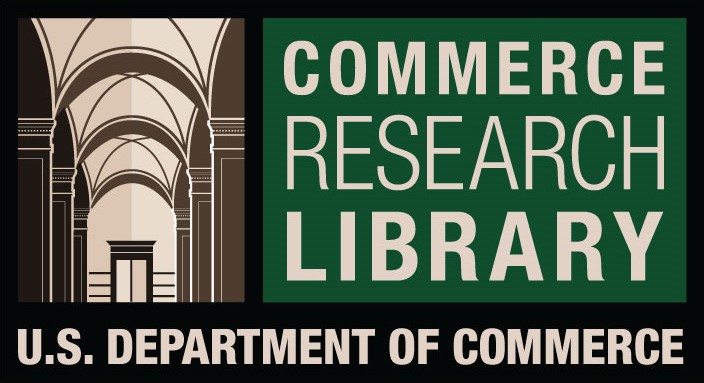Theories of Socialization and Their Role in Child Development
DOI:
https://doi.org/10.61841/kpsjwc85Keywords:
Child development, Socialization, Socialization theories, Social development, Social impactAbstract
Emphasizing its effects on emotional, cognitive, and social development, this chapter investigates the vital part socializing plays in child development. Fundamental theories put forth by Freud, Erikson, and Piaget—which map the developmental phases influencing a person's identity and capacity—guide socializing. The main socializing agent is family; via interactions and behavior, it shapes early knowledge of social norms among youngsters. While peer interactions improve emotional intelligence and collaboration, schools offer controlled settings for improving social skills. The chapter addresses the impact of media and technology as modern socializing agents, stressing both possibilities for involvement and problems including cyberbullying. Children's opinions and actions can be greatly shaped by media exposure, hence careful media use is quite important. Examined for their contributions to child development are community settings, with an eye toward supporting networks encouraging positive relationships and belonging. While cultural standards and socioeconomic level affect socializing behaviour and results, the community offers necessary resources and social networks that help a child's whole growth. The consequences of socializing highlight the importance of fair access to resources and support mechanisms so that every child may flourish in different surroundings. Fostering inclusive settings that support the social development of every kid depends on addressing social inequalities and advancing cultural sensitivity. The chapter ends with underlining the need of early intervention, good parenting techniques, and community support in developing the social and emotional development of children. This thorough knowledge invites legislators, teachers, and caregivers to create loving social settings that support whole growth and readiness for society participation. This chapter offers insightful analysis of the several aspects of socializing and its significant influence on child development, so helping to create supportive surroundings that foster well-rounded people able of surviving in a complex social context.
Downloads
References
1. Anderson, C. A., & Dill, K. E. (2000). Video games and aggressive thoughts, feelings, and behavior in the laboratory
and in life. Journal of Personality and Social Psychology, 78(4), 772-790.
2. Anderson, D. R., Huston, A. C., Schmitt, K. L., Linebarger, D. L., & Wright, J. C. (2001). Early childhood television
viewing and adolescent behavior: The recontact study. Monographs of the Society for Research in Child
Development, 66(1), i-147.
3. Arnett, J. J. (2002). The psychology of globalization. American Psychologist, 57(10), 774-783.
4. Battistich, V., Watson, M., Solomon, D., Schaps, E., & Solomon, J. (2013). The Child Development Project: A
comprehensive program for the development of prosocial character. In Handbook of moral behavior and
development (pp. 1-34). Psychology Press.
5. Bradley, R. H., & Corwyn, R. F. (2002). Socioeconomic status and child development. Annual Review of Psychology,
53(1), 371-399.
6. Bradley, R. H., & Corwyn, R. F. (2002). Socioeconomic status and child development. Annual Review of Psychology,
53(1), 371-399.
7. Bradley, R. H., & Corwyn, R. F. (2002). Socioeconomic status and child development. Annual Review of Psychology,
53(1), 371-399.
8. Bronfenbrenner, U. (1979). The ecology of human development: Experiments by nature and design. Harvard
University Press.
9. Bushman, B. J., & Huesmann, L. R. (2006). Short-term and long-term effects of violent media on aggression in
children and adults. Archives of Pediatrics & Adolescent Medicine, 160(4), 348-352.
10. Coleman, J. S. (1988). Social capital in the creation of human capital. American Journal of Sociology, 94, S95-S120.
11. Eccles, J. S., & Barber, B. L. (1999). Student council, volunteering, basketball, or marching band: What kind of
extracurricular involvement matters? Journal of Adolescent Research, 14(1), 10-43.
12. Eccles, J. S., & Gootman, J. A. (Eds.). (2002). Community programs to promote youth development.
National Academies Press.
13. Granic, I., Lobel, A., & Engels, R. C. (2014). The benefits of playing video games. American Psychologist, 69(1),
66-78.
14. Grusec, J. E. (2011). Socialization processes in the family: Social and emotional development. Annual review of
psychology, 62(1), 243-269.
15. Grusec, J. E., & Davidov, M. (2010). We are integrating different perspectives on socialization theory and research:
A domain‐specific approach. Child development, 81(3), 687-709.
16. Hamre, B. K., & Pianta, R. C. (2001). Early teacher–child relationships and the trajectory of children's school
outcomes through eighth grade. Child Development, 72(2), 625-638.
17. Harkness, S., & Super, C. M. (2002). Culture and parenting. In M. H. Bornstein (Ed.), Handbook of parenting: Vol.
2. Biology and ecology of parenting (2nd ed., pp. 253-280). Lawrence Erlbaum Associates Publishers.
18. Harris, J. R. (2013). Where is the child's environment? A group socialization theory of development. In Personality
and Personality Disorders (pp. 254-285). Routledge.
19. Leventhal, T., & Brooks-Gunn, J. (2000). The neighborhoods they live in: The effects of neighborhood residence on
child and adolescent outcomes. Psychological Bulletin, 126(2), 309-337.
20. Leventhal, T., & Brooks-Gunn, J. (2000). The neighborhoods they live in: The effects of neighborhood residence on
child and adolescent outcomes. Psychological Bulletin, 126(2), 309-337.
21. Leventhal, T., & Brooks-Gunn, J. (2000). The neighborhoods they live in: The effects of neighborhood residence
on child and adolescent outcomes. Psychological Bulletin, 126(2), 309-337.
22. Putnam, R. D. (2000). Bowling alone: The collapse and revival of American community. Simon and Schuster.
23. Triandis, H. C. (1995). Individualism & collectivism. Westview Press.
24. Triandis, H. C. (1995). Individualism & collectivism. Westview Press.
25. Triandis, H. C. (1995). Individualism & collectivism. Westview Press.
26. Valkenburg, P. M., & Peter, J. (2011). Online communication among adolescents: An integrated model of its
attraction, opportunities, and risks. Journal of Adolescent Health, 48(2), 121-127.
27. Valkenburg, P. M., & Peter, J. (2011). Online communication among adolescents: An integrated model of its
attraction, opportunities, and risks. Journal of Adolescent Health, 48(2), 121-127.
28. Wentzel, K. R., & Looney, L. (2007). Socialization in school settings. In J. E. Grusec & P. D. Hastings
(Eds.), Handbook of socialization: Theory and research (pp. 382-403). Guilford Press.
29. Wentzel, K. R., & Looney, L. (2007). Socialization in school settings. In J. E. Grusec & P. D. Hastings (Eds.),
Handbook of socialization: Theory and research (pp. 382-403). Guilford Press.
Downloads
Published
Issue
Section
License
Copyright (c) 2024 Author

This work is licensed under a Creative Commons Attribution 4.0 International License.
You are free to:
- Share — copy and redistribute the material in any medium or format for any purpose, even commercially.
- Adapt — remix, transform, and build upon the material for any purpose, even commercially.
- The licensor cannot revoke these freedoms as long as you follow the license terms.
Under the following terms:
- Attribution — You must give appropriate credit , provide a link to the license, and indicate if changes were made . You may do so in any reasonable manner, but not in any way that suggests the licensor endorses you or your use.
- No additional restrictions — You may not apply legal terms or technological measures that legally restrict others from doing anything the license permits.
Notices:
You do not have to comply with the license for elements of the material in the public domain or where your use is permitted by an applicable exception or limitation .
No warranties are given. The license may not give you all of the permissions necessary for your intended use. For example, other rights such as publicity, privacy, or moral rights may limit how you use the material.












